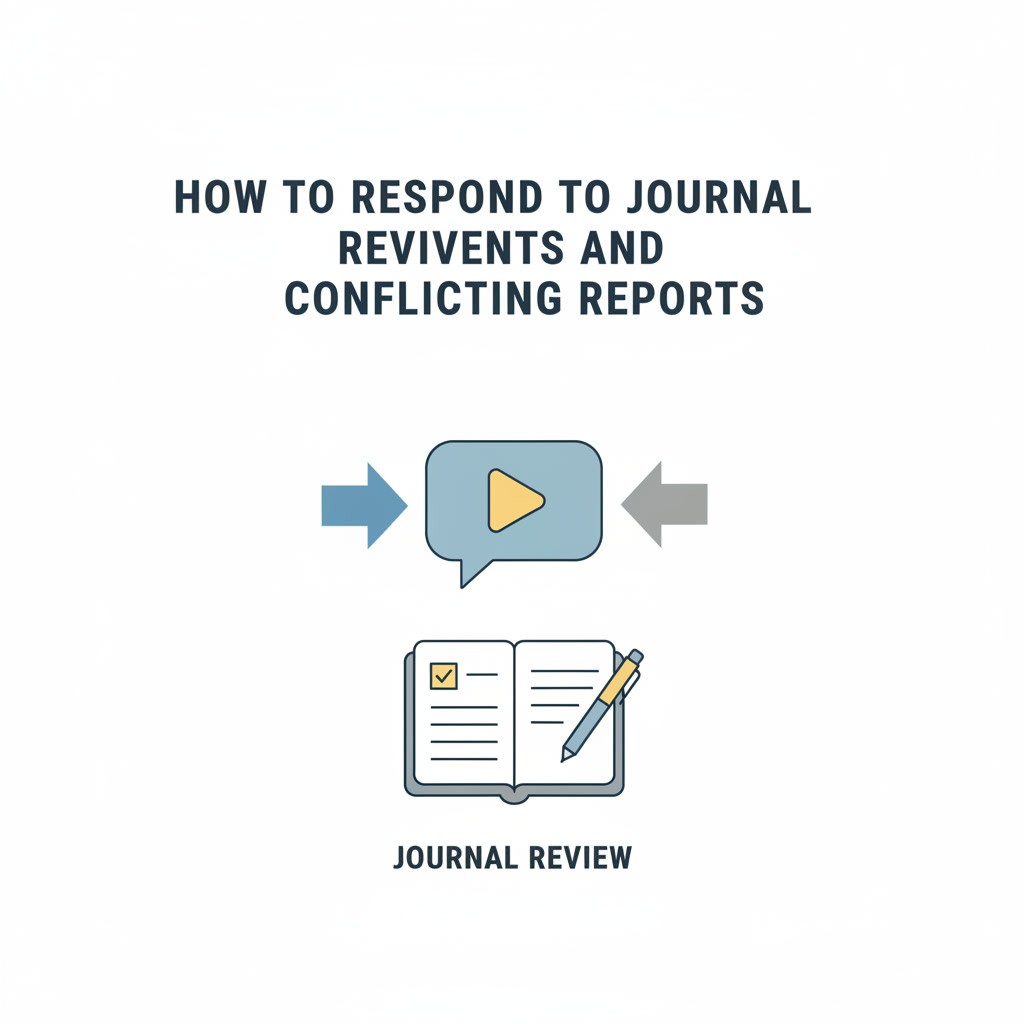How to Use Theory in Academic Papers: A Practical Guide for Master’s Students
Struggling to connect theory to your research or academic writing? As a master’s student, you are expected to use theory in academic papers to interpret evidence and construct a coherent argument– in the social sciences, humanities, natural sciences or professional fields like nursing. Theory matters because it offers explanations for complex phenomena and shapes your research questions, literature review, methodology, and data analysis
This guide is designed for you if your discipline requires engagement with theory, whether you’re analysing cultural texts, studying social behaviour, designing experiments or planning clinical interventions. You will learn how to identify an appropriate theoretical framework, integrate it throughout your research process and use thesify’s feedback tools to refine your writing. By grounding your work in theory you demonstrate intellectual rigor and produce insights that extend beyond description.
What Is a Theoretical Framework and Why Does It Matter?
A theory is a set of concepts and relationships used to explain why a phenomenon occurs. In scholarly work, you use theory to frame your research question, interpret your findings and situate your study within an existing body of knowledge.
Choosing a theoretical framework—a single formal theory that serves as the primary means of understanding the research problem—gives your study focus and direction. This framework guides the development of your research design and helps you decide which data are relevant and how they should be analysed.
Engaging with theory also means recognising its dynamic nature. There are different types and levels of theory (grand, meso and micro), and scholars refine or replace theories as new evidence emerges.
To select an appropriate framework you need to read broadly, consider alternative explanations and ensure that the theory aligns with the phenomena you want to explain. This process ensures that your work contributes meaningfully to academic conversations rather than merely reporting observations.

Theoretical frameworks vs. conceptual frameworks
The primary difference between theoretical and conceptual frameworks is the number and scope of theories they use:
A theoretical framework is built around one formal theory that directly shapes your research question, methods, and analysis. It offers a focused lens for interpreting your findings and is often used in quantitative research.
Example: Applying Barbalet’s theory of trust to examine how patients assess institutional authority in healthcare settings.
A conceptual framework combines multiple theories and concepts to capture more complex or layered phenomena. Conceptual frameworks are common in qualitative research when a single theory cannot fully address the complexity of the phenomenon.
Example: Integrating Brown’s phenomenology of trust with Hall et al.’s model of institutional trust to explore how cancer patients interpret physician credibility, risk, and emotional reassurance.
Understanding this distinction allows you to select the most appropriate framework for your study and justify how it supports your research design.
Selecting the Right Theoretical Framework for Your Paper
When writing a master’s dissertation, selecting a theoretical framework or lens is one of the most strategic decisions you’ll make. Selecting a theoretical framework involves choosing a theory requires selecting one that clarifies your topic, supports your research question, and guides your analysis.
A common issue in academic writing is referencing theorists without applying their work to your case. The thesify feedback below illustrates how this can weaken your argument. In the sample essay, the student cited theorists such as Brown (2009), Lewis and Weigert (1985), and Möllering (2001), but failed to connect their concepts to their paper’s topic (varying levels of trust between doctors and patients). This resulted in a theoretical framework that felt detached from the actual analysis.

This kind of feedback is especially useful because it pinpoints a missed opportunity to demonstrate critical thinking. A stronger approach would have been to explain, for example:
How Lewis and Weigert’s (1985) theory of trust as a social reality could be used to analyze structural factors in institutional trust;
How Brown’s (2009) phenomenological lens helps interpret trust-building in patient-provider relationships;
Or how Möllering’s (2001) model of expectation and suspension applies to navigating uncertainty in treatment contexts.
thesify’s feedback doesn’t just flag the issue, it gives you a starting point for revision. If you're struggling with how to use theory in research, a tool like thesify can assess whether your chosen theory is clearly explained and consistently applied to your analysis.
Ultimately, selecting a theoretical framework requires choosing a theory that works with your research, not against it. When that alignment is clear, your writing gains depth, structure, and analytical strength.
Steps for Choosing a Theoretical Framework
Begin with your research question. Identify the phenomenon you want to explain; the theory must align with your question.
Survey the literature. Examine course readings and recent research to see how others have framed similar problems. A theoretical framework should emerge after synthesising prior studies, not before.
Develop working knowledge of multiple theories. Learn the basics of several theories that intersect with your research’s epistemological values.
Evaluate each theory’s fit. Assess relevance, explanatory power and ease of application.
Consider opposing views. Explore critiques of the theories you’re considering. Check out our article Counterarguments: Writing with Depth and Perspective Through Debate for more advice.
Choose and justify one theory. Select the theory that provides the clearest blueprint for your study and explain how it connects to your research question and design.
Criteria for Selecting a Theory
Relevance to your phenomenon. Choose a theory that directly addresses the concepts you intend to study.
Explanatory power. Determine how well the theory accounts for patterns you expect to observe.
Ease of application and familiarity. Consider whether the theory is manageable and whether you have sufficient understanding to apply it effectively.
Potential for alternative explanations. Evaluate whether the theory accommodates different interpretations and whether integrating other perspectives could strengthen your argument.
How to Apply Theory in Your Academic Writing
Integrating theory into academic writing strengthens your argument and ensures consistency from introduction to analysis. This section explains how to apply theoretical frameworks step-by-step—covering thesis development, literature reviews, methodology, and data analysis.
If you’re selecting a theoretical framework for a master’s thesis or learning how to use theory in research, use these strategies to build clarity and depth.
How to Clearly Understand and Introduce Your Theoretical Framework
Before selecting a theoretical framework, you need to understand it well enough to explain its core argument in two or three clear sentences. If you can’t summarize what the theory says or how it works, revisit the original source. Relying only on secondary summaries often leads to misapplication.
Once you’ve grasped the theory, introduce it early in your academic writing—typically in the introduction or literature review. Name the theorist, state the central concept, and define key terms. This ensures you and your reader share a common understanding before applying the framework to your analysis.
How to Write a Theory-Driven Thesis Statement
When engaging with theory in your academic writing, a strong thesis statement should clearly signal the theoretical framework you are using and explain its relevance. This means directly linking your chosen theory to your research question, argument, or hypothesis.
For example, you might write, “Using Möllering’s theory of trust helps explain the role of uncertainty in patient-physician relationships, which supports my argument that trust is shaped more by context than by institutional design.”
Your theoretical framework should explicitly shape your thesis statement by defining your research problem clearly and justifying your analytical approach. A good thesis passes both the “So what?” and “How and why?” tests. That means:
So what? → Why does your claim matter in the broader academic or practical context?
How and why? → How will your theory help explain the issue, and why is it the best lens for doing so?
The sentence skeleton below can help clarify your thinking:
“I argue that [theory] provides the best lens for understanding [phenomenon] because [reason], which will show that [consequence].”
When your thesis lacks this clarity, your reader is left guessing how theory relates to your claim. The thesify feedback below illustrates what happens when a thesis introduces a topic but fails to show why it matters or how the theory will be used to support the analysis.

This feedback highlights two important steps you can take:
Clarify how your theoretical lens contributes to understanding your topic.
Connect your thesis to real-world or scholarly stakes (e.g., patient outcomes, policy implications, social patterns).
If you receive similar feedback from thesify, revise by asking:
What is the theory helping me see or explain that I couldn’t otherwise?
Have I explained why this theory fits my research question better than alternatives?
Using a theoretical framework effectively starts with embedding it into your thesis. The earlier you make that connection, the stronger and more focused your entire paper will be.
How to Present Theory in a Literature Review or Theoretical Framework Chapter
Whether you’re writing an essay or a master’s dissertation, you need to clearly establish how your chosen theory fits into existing scholarship. In shorter assignments, this typically happens within the literature review. In longer research projects—like a master’s thesis—you may be required to write a separate theoretical framework chapter in addition to the literature review.
In a literature review, your goal is to situate your research in relation to both the theory and the existing body of empirical or conceptual work. You should:
Introduce the theory’s central concepts and key authors
Summarize how the theory has been used, debated, or challenged in your field
Highlight where your research fits within that ongoing conversation
In a theoretical framework chapter, the focus shifts to explaining the specific theory or theories you are applying. You should:
Justify why you selected the theory
Define core concepts clearly and link them to your research questions or variables
Explain how the theory will guide your analysis or structure your argument
In both cases, your goal is the same: demonstrate that you understand the theory’s core ideas, its limitations, and its relevance to your research question.
Students often miss this opportunity. In the thesify feedback below, the student discusses relevant factors related to trust in healthcare but fails to explicitly reference key sociological theories from their readings. As a result, the argument lacks theoretical depth.

To avoid this, make sure your review:
Summarizes the theory’s key concepts, authors, and historical development
Cites recent scholarship that applies or critiques the theory
Explains how your work builds on or fills a gap in existing theory-informed research
If your thesify report suggests you are not fully integrating your theoretical framework, revise your review to make those connections explicit. Naming a theory is not enough—you need to demonstrate how it informs your research focus and interpretation.
How to Link Your Theoretical Framework to Methodology
Your methodology should reflect the logic of your theoretical framework. In academic writing—especially at the dissertation level—this means explaining how your theory shapes your choice of methods and supports your approach to answering the research question.
If you're using qualitative methods, show how your theory justifies tools like interviews, observations, or thematic analysis. For instance, a feminist theoretical framework may support narrative interviews because it prioritizes lived experience and challenges traditional power dynamics.
In quantitative research, link theory to the variables you measure and the structure of your hypotheses. If your framework predicts certain patterns of behavior or outcomes, explain how your survey design or statistical model tests those expectations.
By explicitly connecting your theoretical framework to your research design, you provide a clear rationale for your methodology and demonstrate analytical coherence throughout your academic writing.
How to Apply Your Theoretical Framework in Data Analysis
Whether you’re writing an essay or a master’s dissertation, your theoretical framework should directly inform how you interpret your evidence. In shorter assignments, this may mean applying theoretical concepts to a case study. In a thesis, this often involves using theory to shape your coding, interpret themes, or evaluate results against theoretical expectations.
In both formats, apply the theory as a lens for analysis. Ask:
What would this theory predict in my context?
Does my data support, contradict, or complicate those predictions?
Are there alternative explanations my theory doesn’t account for?
For example, if your study draws on Möllering’s theory of trust, examine whether your interview data reflects his idea of “suspension” in uncertain settings. If it doesn’t, note the divergence—and explain why. This process not only tests your theoretical framework but shows critical engagement with it.
The thesify feedback below offers a clear example of how theory should not be used. In this case, the writer introduced abstract ideas about trust in healthcare but failed to analyze or interpret them. As the feedback notes, deeper analysis was needed to explain what those abstract claims meant in context.

To improve your writing based on this type of feedback, revise your analysis to:
Make explicit links between the theory and each piece of evidence or theme
Discuss whether the theory holds up in your data—or whether it requires refinement
Explain why the theory does or does not explain the observed outcomes
Applying theory to data analysis is where your academic writing moves from descriptive to analytical. By using your theoretical framework to interpret—not just present—your findings, you show depth, coherence, and originality.
How to Engage with Theory in Your Discussion or Critique
In both a thesis discussion chapter and a theory-based academic essay, the discussion section is where you critically reflect on how well your theoretical framework holds up. Rather than simply applying theory, this is your opportunity to evaluate it.
Ask:
Does the theory fully explain your findings or case?
Where does it fall short or fail to capture key dynamics?
Are there alternative theories that might offer a better or complementary explanation?
In a master’s dissertation, this might mean analyzing whether your results confirm the expectations set out by the theory—or whether real-world data reveals limitations. For example, if you used Hall et al.’s (2001) model of institutional trust but found patients relied more on interpersonal cues, you should acknowledge this and suggest why the theory may not fully apply.
In a theory-based essay, this can involve acknowledging a theory’s scope conditions or assumptions and discussing whether they hold in the context you’re analyzing. For example, the thesify feedback below illustrates this challenge. In the sample essay, the student referenced an “optimal healthcare context” but failed to explain what that abstraction meant or how it functioned in real-world healthcare settings. The theory remained too vague to offer meaningful insight.

If your essay engages with abstract concepts like “ideal trust conditions” or “perfect care environments,” your discussion should unpack what those terms actually mean in the context of your data or case. Why might those ideals be unrealistic? What happens when real-world dynamics contradict the theory?
This kind of reflection shows you understand both the strengths and limitations of your chosen theoretical framework—an essential move in advanced academic writing.
Common Mistakes When Using Theory in Academic Writing (and How to Fix Them)
This section identifies recurring problems you may face when integrating theory into your research and offers practical solutions, grounded in the feedback provided by thesify.
Failing to Support Theoretical Claims with Evidence
A common mistake in essays that engage with theory is making theoretical or conceptual claims without supporting them with references. This weakens the credibility of your argument and creates a disconnect between your theoretical framework and the empirical or contextual evidence needed to support it.
This issue is clearly illustrated in the thesify feedback below. In the sample essay, the student suggested that a hospital’s religious affiliation might influence a patient’s willingness to trust their physician. However, this claim was not backed up with a source, leaving the assertion unverified and the connection between theory and evidence incomplete.

How to avoid this mistake:
Cite evidence for theoretical claims: If you're applying a concept to a real-world context (e.g., trust and institutional identity), support the claim with empirical research or scholarly sources.
Use discipline-appropriate sources: In fields like sociology, health studies, or psychology, look for peer-reviewed research that demonstrates how the theory has been applied to similar cases.
Clarify the theory-evidence link: Don’t assume your reader will connect the dots. Make the relationship between your theoretical point and your example explicit.
Use thesify to check for missing references: Feedback on unsupported claims, like the example above, is a signal that a theoretical idea needs sourcing. Revisit those sections and add appropriate references.
Theoretical frameworks only strengthen your writing when they're clearly connected to the evidence you present. Without citations, even valid interpretations can appear speculative or unfounded.
Vague Thesis Statement and Lack of Theoretical Relevance
A vague or unclear thesis statement weakens your argument and makes it difficult for readers to understand the role of theory in your academic writing. A strong thesis must explain both why your claim matters and how your theory supports it.
In the thesify feedback example below, the student's thesis statement is critiqued for failing both the “So what?” and “How and why?” tests. The claim about trust in healthcare is presented without broader significance and lacks clarity about how trust is gained or what factors contribute to it.

How to avoid this mistake:
State why your theoretical lens matters. Make the real-world or scholarly implications of your argument clear. For example, how does applying Brown’s (2009) phenomenological approach to trust help us better understand patient decision-making?
Define key terms. Avoid vague or undefined concepts. If you're writing about “empowerment” or “trust,” explain what those terms mean within your theoretical framework.
Revise for clarity and purpose. Use thesify’s evaluation criteria as a checklist. Ask:
Does your thesis explain why your topic matters?
Does it clarify how your theory supports your argument?
Could someone challenge your claim based on alternative interpretations?
Use this sentence skeleton to help revise:
“I argue that [theory] explains [phenomenon] because [reason], which shows that [consequence].”
Refining your thesis with clear significance and a direct link to your theoretical framework not only strengthens your introduction—it sets the foundation for a well-integrated paper.
Insufficient Evidence and Lack of Theoretical Analysis
One of the most frequent challenges students face in approach theory in academic writing is presenting theoretical claims without analysis or supporting evidence. Even when the theory is relevant, failing to explain what it means in your specific context can make the writing appear superficial or underdeveloped.
The thesify feedback below illustrates this issue. In the sample essay, the student makes the broad claim that “gaining trust becomes highly personal and subjective,” but does not explain what this means in practice. The result is a repeated idea, rather than a deeper analysis of how subjectivity affects trust dynamics in healthcare.

How to avoid this mistake:
Analyze your theoretical claims: Don’t just repeat ideas—explain them. Drawing on the above example, if trust is “personal and subjective,” what factors shape that subjectivity? How do patient values, cultural context, or institutional power affect it?
Link theory to data or examples: For every theoretical point you make, provide a reference, case example, or empirical observation that supports or complicates it.
Clarify abstract terms: If you refer to something as "complex," "subjective," or "dynamic," define those terms in your context. What does complexity mean here? How is subjectivity measured or observed?
Use thesify to identify vague or repeated claims: If your feedback highlights sections with “insufficient analysis,” revise those parts by adding interpretation, specificity, or supporting evidence.
Academic writing improves when you move from summarizing theory to analyzing how it applies in your case. If you make a claim, show what it looks like in action—and explain why it matters.
Over-Reliance on a Single Theoretical Perspective
Focusing too heavily on one theory can limit your analysis and reduce the depth of your academic writing. A strong theoretical framework demonstrates that you’ve considered multiple lenses—even if you ultimately commit to one.
This issue is often flagged when students list factors or findings without connecting them back to competing theoretical viewpoints. In the thesify feedback below, the essay is commended for addressing the complexity of trust in different healthcare contexts, but the feedback also notes that the argument would be stronger if it included more explicit engagement with sociological theories from the course. This suggests an over-reliance on a general or singular perspective.

How to avoid this mistake:
Compare multiple theories: In your literature review or discussion, briefly introduce alternative theoretical frameworks. Show how each could interpret your topic differently.
Justify your choice: If you stick with one theory, explain why it offers the most appropriate lens—and acknowledge what it might overlook.
Engage with opposing evidence: If thesify recommends adding contrasting viewpoints or deeper analysis, use that as a prompt to expand your argument beyond a single narrative.
Avoid theoretical tunnel vision: Complex research problems often require more than one lens. Show that you’ve considered different possibilities, even if you ultimately argue against them.
Over-reliance on a single theory can make your writing appear narrow. Broadening your perspective shows intellectual rigor and strengthens your academic credibility.
How thesify Helps You Engage with Theory
Having learned how to select an appropriate theoretical framework, integrate it throughout your paper and address common challenges, you might wonder how to apply this advice to your own writing. This is where thesify becomes a valuable partner. The platform analyses your draft and provides targeted feedback on your thesis, structure, evidence and tone. In this section, you will see how thesify identifies issues related to theory and what practical steps you can take based on its recommendations.
Use thesify to Evaluate Your Thesis and Theoretical Lens
When you upload a draft to thesify, the tool provides targeted feedback on your thesis statement—including whether it clearly signals a theoretical framework, passes key academic writing tests, and is open to challenge. One of the most helpful features is its evaluation of whether your claim is debatable—a key marker of a strong, theory-informed thesis.
In the sample below, thesify confirms that the thesis statementcan be challenged, meaning it presents an interpretation rather than a universally accepted fact. This signals good academic practice. A strong thesis invites discussion and shows that you're engaging with theory critically, not just describing it.

How to revise your thesis using thesify feedback:
State the significance: Clarify why your research problem matters. What’s at stake?
Highlight the theoretical lens: Name the theory and indicate how it shapes your approach or defines your terms.
Explain how and why: Briefly signal the mechanisms or relationships the theory will help you explore.
Make it debatable: Ensure your thesis expresses an interpretation someone could reasonably disagree with.
thesify doesn't just tell you what’s missing—it can confirm when your academic writing is already doing key things well. Use that insight to build confidence and continue refining how you apply theory in your work.
Improve Your Paper’s Structure and Coherence
Strong academic writing requires clear structure and consistent flow. thesify identifies weak transitions, missing signposts, and organizational gaps that can disrupt your argument and obscure your theoretical lens.
In the sample feedback below, thesify highlights that the essay’s transitions could be improved and that the introduction should be more concise and aligned with the overall argument. These structural issues make it harder for the reader to understand how the paper develops and how each section relates to the theoretical framework.

How to improve structure and flow:
Outline your argument: Plan each section around your thesis. Ensure every part contributes to advancing or interrogating your theoretical framework.
Use signposts: Begin each major section with a sentence that connects it to your thesis and ends with a preview of what’s next.
Link back to theory: Close each section by explaining how the content supports, challenges, or refines your chosen theory.
Reorder if needed: If your ideas feel out of sequence, rearrange paragraphs to improve logical progression and clarity.
Improving transitions and structure doesn’t just help with readability—it strengthens the visibility and coherence of your theoretical argument. Use thesify’s feedback as a structural guide, not just a content checker.
Strengthen Evidence and Citations to Support Your Theory
A theoretical argument relies on clear, consistent evidence. Without proper citations and interpretive analysis, even thoughtful claims can appear unconvincing. thesify identifies when your writing lacks supporting sources, has missing references, or fails to engage critically with evidence.
In the feedback example below, thesify notes that a key conclusion—about trust being “seemingly easier” in certain healthcare settings—is not backed by specific examples or studies. This weakens the credibility of the argument and suggests a need for more precise support.

How to strengthen your evidence:
Diversify your sources: Use a mix of theoretical texts, recent research articles, and empirical case studies to support and critique your framework.
Include opposing evidence: Show that you’ve considered counterexamples. Engaging with contradictory findings adds credibility and analytical depth.
Cite consistently: Every theoretical claim or factual assertion should include a source—especially when applying theory to real-world contexts.
Interpret, don’t just list: Don’t drop a quote or citation and move on. After presenting evidence, explain how it reinforces, contradicts, or refines your theoretical perspective.
Using thesify’s feedback as a reference, revisit unsupported claims and strengthen them with sourced examples. This not only improves the credibility of your academic writing but shows that your use of theory is evidence-driven and well-considered.
Enhance Readability and Tone for Academic Writing
Even if your arguments are theoretically rich, poor readability can undercut their impact. Academic writing should be clear, appropriately formal, and engaging for a graduate-level audience. thesify helps by providing a Flesch–Kincaid readability score, letting you know whether your tone aligns with academic expectations.
In the sample below, thesify indicates that the essay’s readability level is closer to high school than university. This suggests a need to elevate sentence structure, vocabulary, and tone to meet academic standards.

How to adjust your tone:
Vary sentence structure: Use a combination of compound and complex sentences to create a professional and readable rhythm.
Use precise vocabulary: Integrate key theoretical or discipline-specific terms, but define them clearly for your reader.
Avoid jargon overload: Technical terms are useful when necessary, but clarity should always come first. Don’t let dense language obscure your ideas.
Write for your audience: Imagine explaining your theory to a peer outside your subfield—aim for clarity without oversimplification.
Use thesify’s readability tool as a guidepost. A more sophisticated writing style will not only improve your score, but also demonstrate your mastery of theoretical material in a way that is both accessible and academically rigorous.
FAQs: theoretical frameworks and thesify
What is a theoretical framework in academic writing?
A theoretical framework is the specific theory you use to guide your study. It shapes how you define the research problem, formulate your questions, review the literature and interpret your data.
How do I choose a theory for my dissertation?
Begin by clarifying your research question. Then survey the literature to see how others have explained similar phenomena. Select a theory whose concepts and assumptions align with what you aim to investigate and be prepared to justify why it is the most suitable lens.
Do I need to use more than one theory?
You don’t always need multiple theories, but combining frameworks or considering alternative explanations can enrich your analysis. Using more than one perspective helps you examine your topic from different angles and strengthens your overall argument.
How can thesify help with my theoretical framework?
thesify analyses your thesis statement, checks the structure and coherence of your draft, highlights missing evidence or citations and evaluates readability. Its feedback helps you refine your theoretical framework and integrate it more effectively throughout your paper.
Final Thoughts: Mastering Theory in Academic Writing
Engaging deeply and critically with theory is one of the core challenges graduate students face in master's-level academic writing. Selecting a suitable theoretical framework, applying it rigorously, and critically assessing its strengths and limitations demonstrates your intellectual depth.
By integrating theory clearly at every stage—from literature review and methodology to data analysis and discussion—you produce research that is analytically rigorous, coherent, and persuasive. Use thesify's AI-powered feedback to sharpen your arguments, refine your analysis, and master theory-based academic writing.

Ready to improve your theoretical framework and analysis?
Upload your draft to thesify now and receive personalized, AI-powered feedback to elevate your academic writing.
Related Posts
thesify for Master's students: Your master’s program is more than just coursework—it’s a stepping stone to building your academic and professional reputation. Whether you’re aiming to publish, present, or secure funding, thesify has your back with tools specifically designed for these milestones.
Step-by-Step Literature Review Guide with Expert Tips: Master the literature review process with this step-by-step guide. Get expert strategies, essential research tools, and avoid common mistakes for a high-quality review.
How to Improve Your Thesis Chapters Before Submission: 7-Step AI Feedback Guide for Graduate Students: Discover how an AI tool like thesify can evaluate each chapter and provide structured guidance. Turn insights into action using structured feedback to guide your chapter-by-chapter improvements.

















